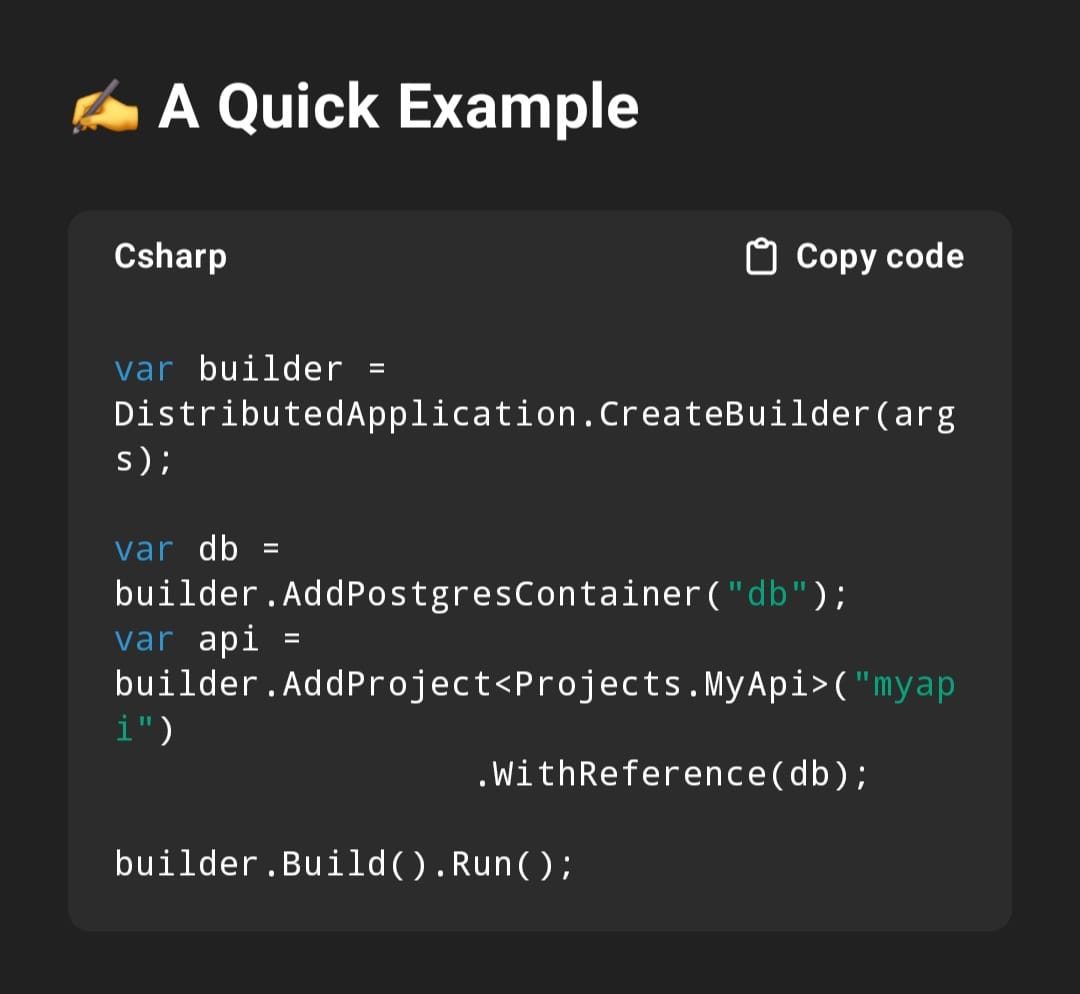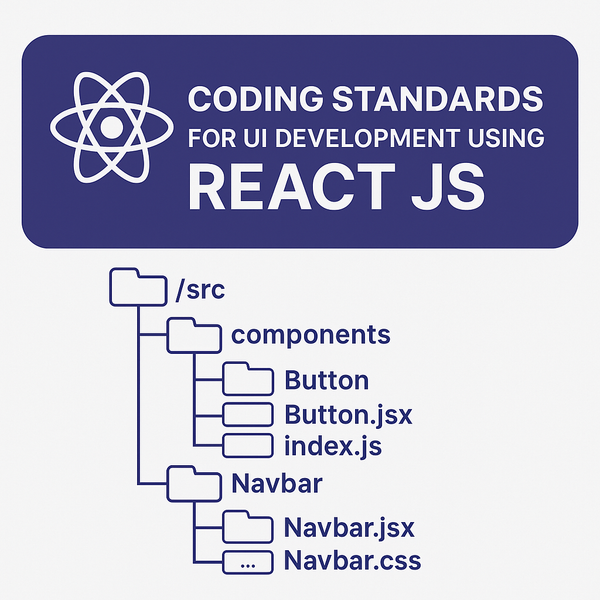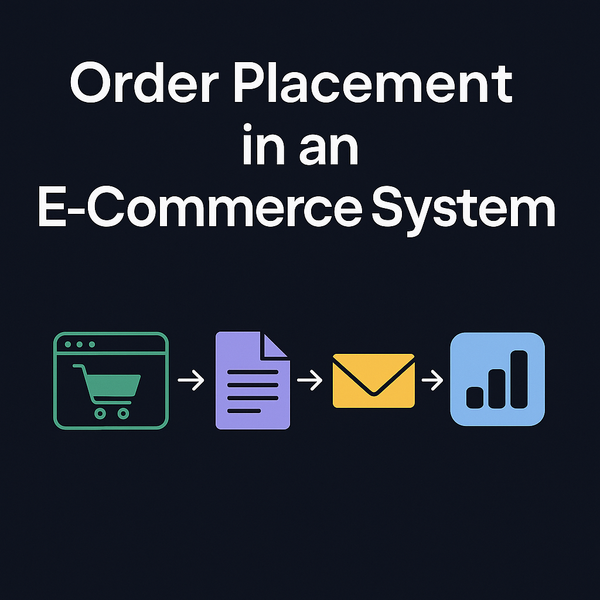🚀 .NET Aspire — The Future of Cloud-Native App Development in .NET

“Build modern, scalable apps with ease — say hello to .NET Aspire!”
✨ What is .NET Aspire?
.NET Aspire is a brand-new cloud-native application development stack for .NET 8 and beyond.
It’s a pre-configured, opinionated setup to help developers quickly build, manage, and deploy microservices, APIs, workers, and cloud-ready apps — with less manual configuration.
Think of it like this:
.NET Aspire = .NET + Distributed App Patterns + Cloud Integration + Minimal Boilerplate.
⚙️ How Does .NET Aspire Work?
.NET Aspire works around these main concepts:
- Application Model
Instead of creating multiple disconnected projects manually, you define your entire app ecosystem (APIs, background jobs, message brokers, databases) declaratively.
Use .apphost project to orchestrate all services in one place.
- Service Defaults
Aspire provides best practices out of the box — like health checks, telemetry, configuration, retries — without you having to set up everything manually.
- Orchestration
Manage your database, message queues, APIs, identity services, and more — all orchestrated locally and in the cloud using Aspire's orchestrators.
Supports Docker Compose, Azure Container Apps, Kubernetes easily.
- Cloud Resource Binding
.NET Aspire connects cloud resources (e.g., Azure Storage, Redis, PostgreSQL) with minimal code.
Just define bindings — no need to manually configure connection strings, secrets, retries, etc.
🛠️ Key Components of .NET Aspire
- AppHost (Orchestrator Project)
This is the central brain of your Aspire application.
Manages and wires together all services, dependencies, configurations, and resource bindings.
Example: connects APIs to databases, background workers to queues, etc.
- Projects (Microservices / Web / Workers)
These are the individual application units like:
ASP.NET Web APIs
Blazor apps / MAUI apps
Background Workers (for scheduled or event-based jobs)
Each project is referenced in the AppHost.
- Resources
External dependencies used by services:
Databases (SQL Server, PostgreSQL, MongoDB)
Message Brokers (RabbitMQ, Azure Service Bus)
Redis, Blob Storage, etc.
Aspire helps you define and bind these easily using infrastructure abstractions.
- Service Bindings
This connects resources (e.g., PostgreSQL) to services (e.g., API).
Automatically wires connection strings, secrets, and handles retry policies.
You don’t hardcode secrets — Aspire handles that!
- Service Defaults
Applies best-practice configurations to all services:
Health checks
Metrics & observability
Logging & tracing
Retry policies
Keeps your app production-ready out-of-the-box.
- Telemetry & Observability
Built-in support for OpenTelemetry.
You get:
Distributed tracing
Logs with correlation IDs
Metrics dashboards
No complex setup required.
- Orchestrators (Deployment Targets)
Aspire supports deployment to:
Local dev with Docker Compose
Azure Container Apps
Kubernetes
You can switch environments with minimal changes.
⚡ Why Should You Care About .NET Aspire?
Faster Start: Skip the painful setup, focus on your business logic.
Cloud Native: Out-of-the-box patterns for cloud scale apps.
Local + Cloud: Easy to run locally and deploy seamlessly to cloud platforms.
Observability: Built-in metrics, logging, and tracing for free!
Extensibility: Add your own custom services and integrations.
Use cases:
Microservices Apps
Distributed Background Jobs
Modern Web APIs
Event-Driven Systems
SaaS Platforms

Explanation:
Create a Postgres database container.
Link an API project to it.
Run everything together — orchestrated beautifully.
🚀 Final Thoughts
.NET Aspire is Microsoft's answer to the complexities of modern, distributed, cloud-native development.
If you're planning to build scalable, production-grade apps in 2025 and beyond — learning .NET Aspire early will give you a massive edge.
It’s fast, opinionated, developer-first — cloud-native made easy.
"Cloud-native development should be a joy, not a struggle — and .NET Aspire is here to prove it."



